Text-Media
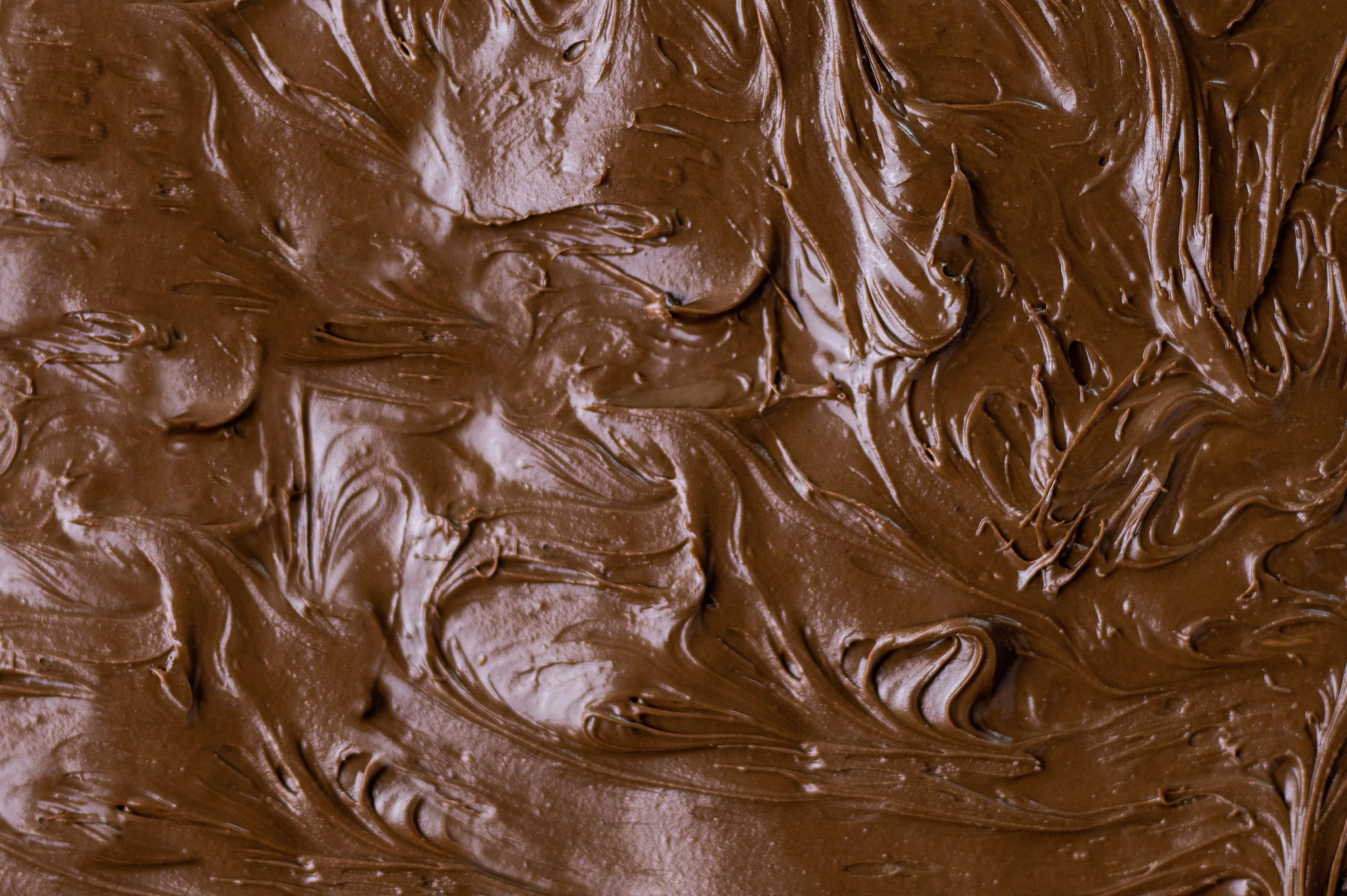
Christopher Columbus was probably the first European to encounter cocoa in 1502, although he paid no further attention to it. At the end of the 16th century, chocolate became a popular drink among immigrant missionaries and settlers. From Mesoamerica, chocolate began its triumphal march around the world.
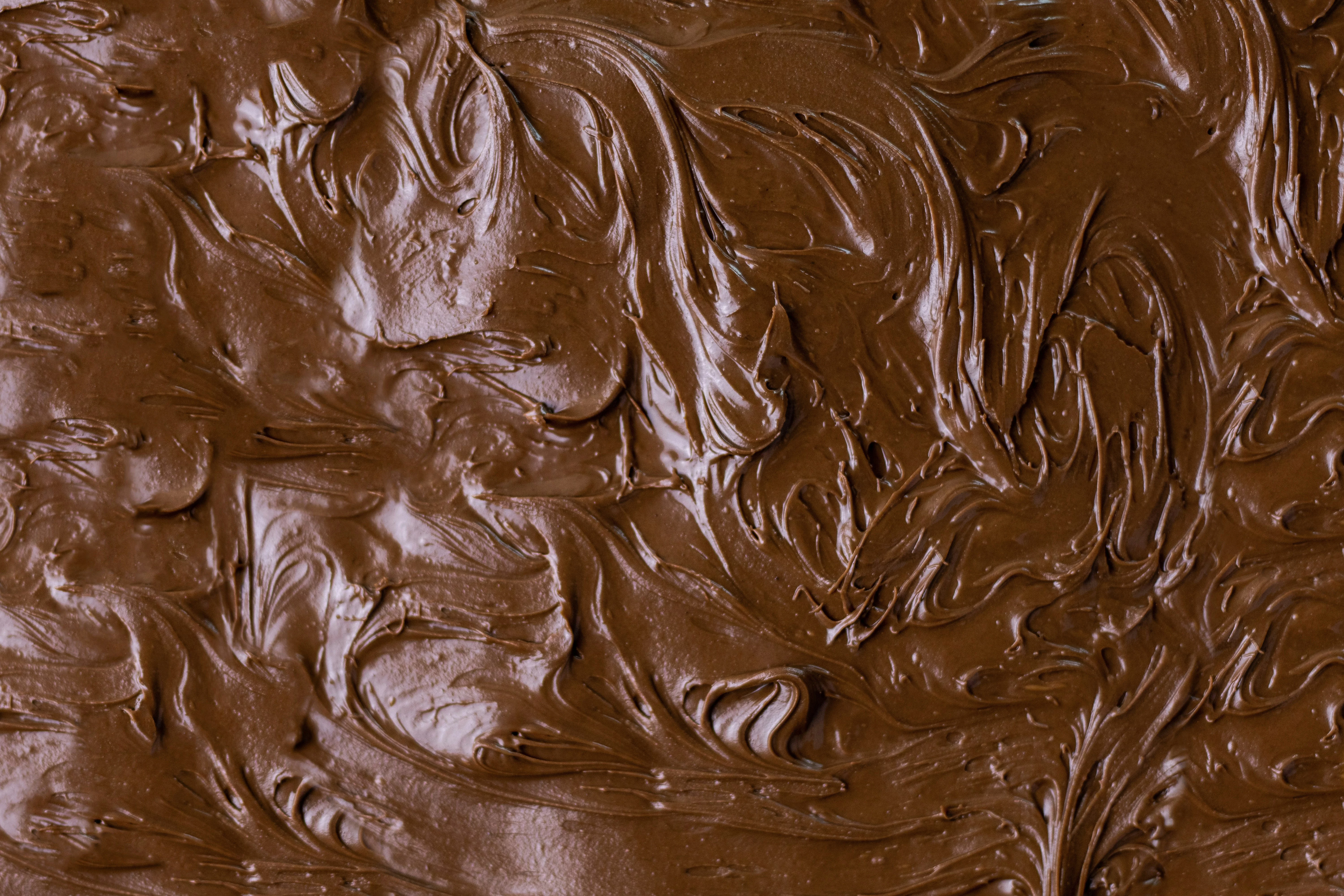
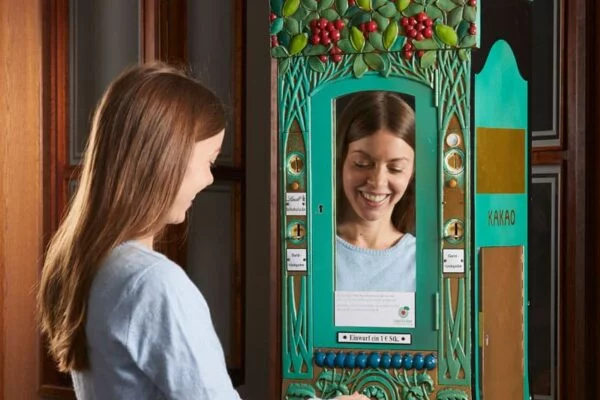
Christopher Columbus was probably the first European to encounter cocoa in 1502, although he paid no further attention to it. At the end of the 16th century, chocolate became a popular drink among immigrant missionaries and settlers. From Mesoamerica, chocolate began its triumphal march around the world.

Christopher Columbus was probably the first European to encounter cocoa in 1502, although he paid no further attention to it. At the end of the 16th century, chocolate became a popular drink among immigrant missionaries and settlers. From Mesoamerica, chocolate began its triumphal march around the world.

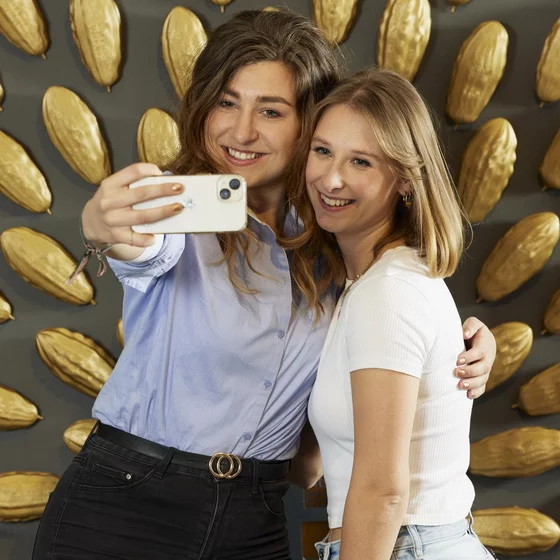
Christopher Columbus was probably the first European to encounter cocoa in 1502, although he paid no further attention to it. At the end of the 16th century, chocolate became a popular drink among immigrant missionaries and settlers. From Mesoamerica, chocolate began its triumphal march around the world.

Christopher Columbus was probably the first European to encounter cocoa in 1502, although he paid no further attention to it. At the end of the 16th century, chocolate became a popular drink among immigrant missionaries and settlers. From Mesoamerica, chocolate began its triumphal march around the world.
Hans Imhoff (1922-2007) dreamed of a chocolate museum with a fountain in which chocolate bubbled incessantly.
In 1972, Hans Imhoff took over the Stollwerck factory in Cologne's Südstadt district. There he happened to discover containers with broken machines, packaging materials and old files - scrap - ready for removal. He immediately realized that he had found a treasure. He had it examined, refurbished and restored; the foundation for a museum was laid. However, it was many years before the chocolate museum opened. Hans Imhoff used this time to research the cultural and industrial history of chocolate. During this time, he built up his collection and constantly expanded it.
After his wife Gerburg Klara Imhoff found the best location for the Chocolate Museum in 1992 with the old main customs office in Cologne's Rheinauhafen, Cologne's new landmark was born.
On October 31, 1993, the Chocolate Museum was opened after a construction period of just 13 months. It has become a success in German museum history that was never thought possible: with over 650,000 visitors a year, it is one of the most visited cultural institutions in Cologne. The Chocolate Museum is self-supporting and generates its running costs independently - an exceptional phenomenon in the museum world.

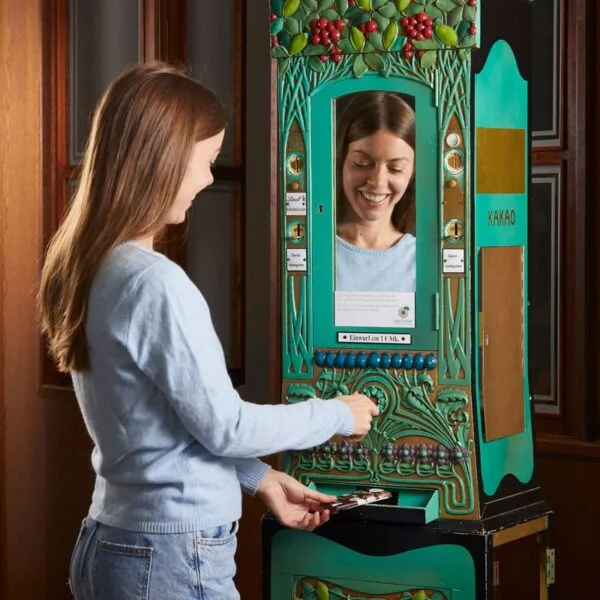
Christopher Columbus was probably the first European to encounter cocoa in 1502, although he paid no further attention to it. At the end of the 16th century, chocolate became a popular drink among immigrant missionaries and settlers. From Mesoamerica, chocolate began its triumphal march around the world.

Christopher Columbus was probably the first European to encounter cocoa in 1502, although he paid no further attention to it. At the end of the 16th century, chocolate became a popular drink among immigrant missionaries and settlers. From Mesoamerica, chocolate began its triumphal march around the world.


Christopher Columbus was probably the first European to encounter cocoa in 1502, although he paid no further attention to it. At the end of the 16th century, chocolate became a popular drink among immigrant missionaries and settlers. From Mesoamerica, chocolate began its triumphal march around the world.

The conquerors of our time
Christopher Columbus was probably the first European to encounter cocoa in 1502, although he paid no further attention to it. At the end of the 16th century, chocolate became a popular drink among immigrant missionaries and settlers. From Mesoamerica, chocolate began its triumphal march around the world.


The conquerors of our time
Christopher Columbus was probably the first European to encounter cocoa in 1502, although he paid no further attention to it. At the end of the 16th century, chocolate became a popular drink among immigrant missionaries and settlers. From Mesoamerica, chocolate began its triumphal march around the world.
Hans Imhoff (1922-2007) dreamed of a chocolate museum with a fountain in which chocolate bubbled incessantly.
In 1972, Hans Imhoff took over the Stollwerck factory in Cologne's Südstadt district. There he happened to discover containers with broken machines, packaging materials and old files - scrap - ready for removal. He immediately realized that he had found a treasure. He had it examined, refurbished and restored; the foundation for a museum was laid. However, it was many years before the chocolate museum opened. Hans Imhoff used this time to research the cultural and industrial history of chocolate. During this time, he built up his collection and constantly expanded it.
After his wife Gerburg Klara Imhoff found the best location for the Chocolate Museum in 1992 with the old main customs office in Cologne's Rheinauhafen, Cologne's new landmark was born.
On October 31, 1993, the Chocolate Museum was opened after a construction period of just 13 months. It has become a success in German museum history that was never thought possible: with over 650,000 visitors a year, it is one of the most visited cultural institutions in Cologne. The Chocolate Museum is self-supporting and generates its running costs independently - an exceptional phenomenon in the museum world.

The conquerors of our time
Christopher Columbus was probably the first European to encounter cocoa in 1502, although he paid no further attention to it. At the end of the 16th century, chocolate became a popular drink among immigrant missionaries and settlers. From Mesoamerica, chocolate began its triumphal march around the world.


The conquerors of our time
Christopher Columbus was probably the first European to encounter cocoa in 1502, although he paid no further attention to it. At the end of the 16th century, chocolate became a popular drink among immigrant missionaries and settlers. From Mesoamerica, chocolate began its triumphal march around the world.

The conquerors of our time
Christopher Columbus was probably the first European to encounter cocoa in 1502, although he paid no further attention to it. At the end of the 16th century, chocolate became a popular drink among immigrant missionaries and settlers. From Mesoamerica, chocolate began its triumphal march around the world.


The conquerors of our time
Christopher Columbus was probably the first European to encounter cocoa in 1502, although he paid no further attention to it. At the end of the 16th century, chocolate became a popular drink among immigrant missionaries and settlers. From Mesoamerica, chocolate began its triumphal march around the world.

The conquerors of our time
Christopher Columbus was probably the first European to encounter cocoa in 1502, although he paid no further attention to it. At the end of the 16th century, chocolate became a popular drink among immigrant missionaries and settlers. From Mesoamerica, chocolate began its triumphal march around the world.
Hans Imhoff (1922-2007) dreamed of a chocolate museum with a fountain in which chocolate bubbled incessantly.
In 1972, Hans Imhoff took over the Stollwerck factory in Cologne's Südstadt district. There he happened to discover containers with broken machines, packaging materials and old files - scrap - ready for removal. He immediately realized that he had found a treasure. He had it examined, refurbished and restored; the foundation for a museum was laid. However, it was many years before the chocolate museum opened. Hans Imhoff used this time to research the cultural and industrial history of chocolate. During this time, he built up his collection and constantly expanded it.
After his wife Gerburg Klara Imhoff found the best location for the Chocolate Museum in 1992 with the old main customs office in Cologne's Rheinauhafen, Cologne's new landmark was born.
On October 31, 1993, the Chocolate Museum was opened after a construction period of just 13 months. It has become a success in German museum history that was never thought possible: with over 650,000 visitors a year, it is one of the most visited cultural institutions in Cologne. The Chocolate Museum is self-supporting and generates its running costs independently - an exceptional phenomenon in the museum world.


The conquerors of our time
Christopher Columbus was probably the first European to encounter cocoa in 1502, although he paid no further attention to it. At the end of the 16th century, chocolate became a popular drink among immigrant missionaries and settlers. From Mesoamerica, chocolate began its triumphal march around the world.

Christopher Columbus was probably the first European to encounter cocoa in 1502, although he paid no further attention to it. At the end of the 16th century, chocolate became a popular drink among immigrant missionaries and settlers. From Mesoamerica, chocolate began its triumphal march around the world.


Christopher Columbus was probably the first European to encounter cocoa in 1502, although he paid no further attention to it. At the end of the 16th century, chocolate became a popular drink among immigrant missionaries and settlers. From Mesoamerica, chocolate began its triumphal march around the world.

Christopher Columbus was probably the first European to encounter cocoa in 1502, although he paid no further attention to it. At the end of the 16th century, chocolate became a popular drink among immigrant missionaries and settlers. From Mesoamerica, chocolate began its triumphal march around the world.


Christopher Columbus was probably the first European to encounter cocoa in 1502, although he paid no further attention to it. At the end of the 16th century, chocolate became a popular drink among immigrant missionaries and settlers. From Mesoamerica, chocolate began its triumphal march around the world.
Hans Imhoff (1922-2007) dreamed of a chocolate museum with a fountain in which chocolate bubbled incessantly.
In 1972, Hans Imhoff took over the Stollwerck factory in Cologne's Südstadt district. There he happened to discover containers with broken machines, packaging materials and old files - scrap - ready for removal. He immediately realized that he had found a treasure. He had it examined, refurbished and restored; the foundation for a museum was laid. However, it was many years before the chocolate museum opened. Hans Imhoff used this time to research the cultural and industrial history of chocolate. During this time, he built up his collection and constantly expanded it.
After his wife Gerburg Klara Imhoff found the best location for the Chocolate Museum in 1992 with the old main customs office in Cologne's Rheinauhafen, Cologne's new landmark was born.
On October 31, 1993, the Chocolate Museum was opened after a construction period of just 13 months. It has become a success in German museum history that was never thought possible: with over 650,000 visitors a year, it is one of the most visited cultural institutions in Cologne. The Chocolate Museum is self-supporting and generates its running costs independently - an exceptional phenomenon in the museum world.

Christopher Columbus was probably the first European to encounter cocoa in 1502, although he paid no further attention to it. At the end of the 16th century, chocolate became a popular drink among immigrant missionaries and settlers. From Mesoamerica, chocolate began its triumphal march around the world.


Christopher Columbus was probably the first European to encounter cocoa in 1502, although he paid no further attention to it. At the end of the 16th century, chocolate became a popular drink among immigrant missionaries and settlers. From Mesoamerica, chocolate began its triumphal march around the world.

Christopher Columbus was probably the first European to encounter cocoa in 1502, although he paid no further attention to it. At the end of the 16th century, chocolate became a popular drink among immigrant missionaries and settlers. From Mesoamerica, chocolate began its triumphal march around the world.


Christopher Columbus was probably the first European to encounter cocoa in 1502, although he paid no further attention to it. At the end of the 16th century, chocolate became a popular drink among immigrant missionaries and settlers. From Mesoamerica, chocolate began its triumphal march around the world.

The Chocolate Museum Cologne
Christopher Columbus was probably the first European to encounter cocoa in 1502, although he paid no further attention to it. At the end of the 16th century, chocolate became a popular drink among immigrant missionaries and settlers. From Mesoamerica, chocolate began its triumphal march around the world. Hans Imhoff (1922-2007) dreamed of a chocolate museum with a fountain in which chocolate bubbled incessantly.
In 1972, Hans Imhoff took over the Stollwerck factory in Cologne's Südstadt district. There he happened to discover containers with broken machines, packaging materials and old files - scrap - ready for removal. He immediately realized that he had found a treasure. He had it examined, refurbished and restored; the foundation for a museum was laid. However, it was many years before the chocolate museum opened. Hans Imhoff used this time to research the cultural and industrial history of chocolate. During this time, he built up his collection and constantly expanded it.
After his wife Gerburg Klara Imhoff found the best location for the Chocolate Museum in 1992 with the old main customs office in Cologne's Rheinauhafen, Cologne's new landmark was born.
On October 31, 1993, the Chocolate Museum was opened after a construction period of just 13 months. It has become a success in German museum history that was never thought possible: with over 650,000 visitors a year, it is one of the most visited cultural institutions in Cologne. The Chocolate Museum is self-supporting and generates its running costs independently - an exceptional phenomenon in the museum world.


The Chocolate Museum Cologne
Christopher Columbus was probably the first European to encounter cocoa in 1502, although he paid no further attention to it. At the end of the 16th century, chocolate became a popular drink among immigrant missionaries and settlers. From Mesoamerica, chocolate began its triumphal march around the world.

The Chocolate Museum Cologne
Christopher Columbus was probably the first European to encounter cocoa in 1502, although he paid no further attention to it. At the end of the 16th century, chocolate became a popular drink among immigrant missionaries and settlers. From Mesoamerica, chocolate began its triumphal march around the world.



The Chocolate Museum Cologne
Christopher Columbus was probably the first European to encounter cocoa in 1502, although he paid no further attention to it. At the end of the 16th century, chocolate became a popular drink among immigrant missionaries and settlers. From Mesoamerica, chocolate began its triumphal march around the world.

The Chocolate Museum Cologne
Christopher Columbus was probably the first European to encounter cocoa in 1502, although he paid no further attention to it. At the end of the 16th century, chocolate became a popular drink among immigrant missionaries and settlers. From Mesoamerica, chocolate began its triumphal march around the world.


The Chocolate Museum Cologne
Christopher Columbus was probably the first European to encounter cocoa in 1502, although he paid no further attention to it. At the end of the 16th century, chocolate became a popular drink among immigrant missionaries and settlers. From Mesoamerica, chocolate began its triumphal march around the world. Hans Imhoff (1922-2007) dreamed of a chocolate museum with a fountain in which chocolate bubbled incessantly.
In 1972, Hans Imhoff took over the Stollwerck factory in Cologne's Südstadt district. There he happened to discover containers with broken machines, packaging materials and old files - scrap - ready for removal. He immediately realized that he had found a treasure. He had it examined, refurbished and restored; the foundation for a museum was laid. However, it was many years before the chocolate museum opened. Hans Imhoff used this time to research the cultural and industrial history of chocolate. During this time, he built up his collection and constantly expanded it.
After his wife Gerburg Klara Imhoff found the best location for the Chocolate Museum in 1992 with the old main customs office in Cologne's Rheinauhafen, Cologne's new landmark was born.
On October 31, 1993, the Chocolate Museum was opened after a construction period of just 13 months. It has become a success in German museum history that was never thought possible: with over 650,000 visitors a year, it is one of the most visited cultural institutions in Cologne. The Chocolate Museum is self-supporting and generates its running costs independently - an exceptional phenomenon in the museum world.

The Chocolate Museum Cologne
Christopher Columbus was probably the first European to encounter cocoa in 1502, although he paid no further attention to it. At the end of the 16th century, chocolate became a popular drink among immigrant missionaries and settlers. From Mesoamerica, chocolate began its triumphal march around the world.


The Chocolate Museum Cologne
Christopher Columbus was probably the first European to encounter cocoa in 1502, although he paid no further attention to it. At the end of the 16th century, chocolate became a popular drink among immigrant missionaries and settlers. From Mesoamerica, chocolate began its triumphal march around the world.
The sweet world of experience in the Chocolate Museum
Seducing the senses: chocolate (H2 - Large Style)
In agreement with the conservation authorities, it was clear from the outset that the old and the new complex should be clearly differentiated. The choice fell on a transparent building with an abundance of aluminum and glass that frames the old main customs office. In addition to exhibition rooms, a production hall also had to be designed for the glass chocolate factory. It was built at the tip of the Rheinau peninsula like a large ship's deck.
- Harvesting the cocoa beans The cocoa pods are carefully picked from the trees.
- Fermentation The beans are fermented to develop the flavor.
- Drying After fermentation, the beans are dried in the sun.
- Roasting
- The dried beans are roasted, which further enhances their aroma.
- Grinding and further processing
- The roasted beans are ground to produce cocoa mass, which is further processed into various types of chocolate.
The history of chocolate (H3 - Medium Style)
The chocolate fountain (anchor link), which is always filled with fresh Lindt chocolate, is not the only tempting highlight of the museum's own chocolate production. The production process can also be observed step by step on the glass machines. Our Maître Chocolatier awaits you at the chocolate fountain. There you can taste fresh Lindt chocolate to your heart's content.
Popular chocolate varieties (H4 Small Style)
- Dark chocolate
- Intense cocoa flavor with a low sugar content.
- Milk chocolate
- Creamy texture and sweet taste thanks to the addition of milk.
- White chocolate
- Made from cocoa butter, sugar and milk, without cocoa solids.
- Ruby chocolate
- Known for its natural pink color and fruity taste.
*** Please always read the notes (asterisk text)
In the handwriting of chocolate: a poetic indulgence (H4 - Handwriting Style)
Chocolate has a fascinating history dating back to the ancient civilizations of Mesoamerica. Even the Maya and Aztecs appreciated this"drink of the gods" made from cocoa
Learn more about chocolate Button Primary
Chocolate in the 16th century (H3 - Handwriting Style)
Chocolate first became popular in Europe in the 16th century and quickly developed into a symbol of prosperity and indulgence. Today, it has become an integral part of our everyday lives, whether as a bar, praline or drink.
Find out more about the history of chocolate Text link
Discover the diversity of chocolate (H4 - Medium Style)
The world of chocolate is full of variety and delicacies. Whether dark, milk or white - there is something for every taste. Chocolate can be enjoyed in countless forms: as a pure indulgence, in pastries and cakes or as a sophisticated ingredient in savory dishes.
Copy text with picture on the right 1-column: Unimagined worlds of taste open up when you explore the diversity of chocolate. Whether as fine dark or creamy whole milk - chocolate is a delight for all the senses.
A child once said: "Chocolate is the best sweet in the world. I am always happy about chocolate.
Chocolate is not only delicious, it can also lift your mood - thanks to the antioxidants it naturally contains, which release endorphins in the body.
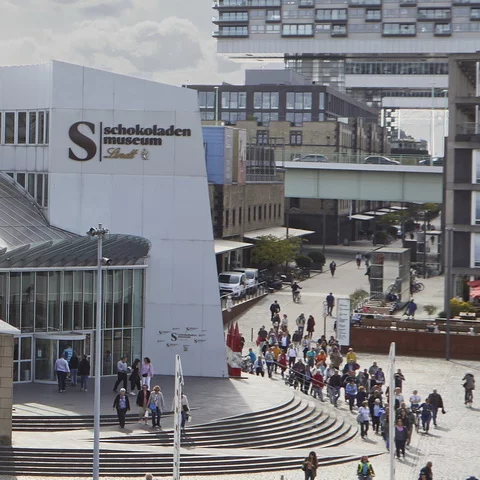

The sweet world of experience in the Chocolate Museum
Seducing the senses: chocolate (H2 - Large Style)
In agreement with the conservation authorities, it was clear from the outset that the old and the new complex should be clearly differentiated. The choice fell on a transparent building with an abundance of aluminum and glass that frames the old main customs office. In addition to exhibition rooms, a production hall also had to be designed for the glass chocolate factory. It was built at the tip of the Rheinau peninsula like a large ship's deck.
- Harvesting the cocoa beans The cocoa pods are carefully picked from the trees.
- Fermentation The beans are fermented to develop the flavor.
- Drying After fermentation, the beans are dried in the sun.
- Roasting
- The dried beans are roasted, which further enhances their aroma.
- Grinding and further processing
- The roasted beans are ground to produce cocoa mass, which is further processed into various types of chocolate.
The history of chocolate (H3 - Medium Style)
The chocolate fountain (anchor link), which is always filled with fresh Lindt chocolate, is not the only tempting highlight of the museum's own chocolate production. The production process can also be observed step by step on the glass machines. Our Maître Chocolatier awaits you at the chocolate fountain. There you can taste fresh Lindt chocolate to your heart's content.
Popular chocolate varieties (H4 Small Style)
- Dark chocolate
- Intense cocoa flavor with a low sugar content.
- Milk chocolate
- Creamy texture and sweet taste thanks to the addition of milk.
- White chocolate
- Made from cocoa butter, sugar and milk, without cocoa solids.
- Ruby chocolate
- Known for its natural pink color and fruity taste.
*** Please always read the notes (asterisk text)
In the handwriting of chocolate: a poetic indulgence (H4 - Handwriting Style)
Chocolate has a fascinating history dating back to the ancient civilizations of Mesoamerica. Even the Maya and Aztecs appreciated this"drink of the gods" made from cocoa
Learn more about chocolate Button Primary
Chocolate in the 16th century (H3 - Handwriting Style)
Chocolate first became popular in Europe in the 16th century and quickly developed into a symbol of prosperity and indulgence. Today, it has become an integral part of our everyday lives, whether as a bar, praline or drink.
Find out more about the history of chocolate Text link
Discover the diversity of chocolate (H4 - Medium Style)
The world of chocolate is full of variety and delicacies. Whether dark, milk or white - there is something for every taste. Chocolate can be enjoyed in countless forms: as a pure indulgence, in pastries and cakes or as a sophisticated ingredient in savory dishes.
Copy text with picture on the right 1-column: Unimagined worlds of taste open up when you explore the diversity of chocolate. Whether as fine dark or creamy whole milk - chocolate is a delight for all the senses.
A child once said: "Chocolate is the best sweet in the world. I am always happy about chocolate.
Chocolate is not only delicious, it can also lift your mood - thanks to the antioxidants it naturally contains, which release endorphins in the body.

The sweet world of experience in the Chocolate Museum
Seducing the senses: chocolate (H2 - Large Style)
In agreement with the conservation authorities, it was clear from the outset that the old and the new complex should be clearly differentiated. The choice fell on a transparent building with an abundance of aluminum and glass that frames the old main customs office. In addition to exhibition rooms, a production hall also had to be designed for the glass chocolate factory. It was built at the tip of the Rheinau peninsula like a large ship's deck.
- Harvesting the cocoa beans The cocoa pods are carefully picked from the trees.
- Fermentation The beans are fermented to develop the flavor.
- Drying After fermentation, the beans are dried in the sun.
- Roasting
- The dried beans are roasted, which further enhances their aroma.
- Grinding and further processing
- The roasted beans are ground to produce cocoa mass, which is further processed into various types of chocolate.
The history of chocolate (H3 - Medium Style)
The chocolate fountain (anchor link), which is always filled with fresh Lindt chocolate, is not the only tempting highlight of the museum's own chocolate production. The production process can also be observed step by step on the glass machines. Our Maître Chocolatier awaits you at the chocolate fountain. There you can taste fresh Lindt chocolate to your heart's content.
Popular chocolate varieties (H4 Small Style)
- Dark chocolate
- Intense cocoa flavor with a low sugar content.
- Milk chocolate
- Creamy texture and sweet taste thanks to the addition of milk.
- White chocolate
- Made from cocoa butter, sugar and milk, without cocoa solids.
- Ruby chocolate
- Known for its natural pink color and fruity taste.
*** Please always read the notes (asterisk text)
In the handwriting of chocolate: a poetic indulgence (H4 - Handwriting Style)
Chocolate has a fascinating history dating back to the ancient civilizations of Mesoamerica. Even the Maya and Aztecs appreciated this"drink of the gods" made from cocoa
Learn more about chocolate Button Primary
Chocolate in the 16th century (H3 - Handwriting Style)
Chocolate first became popular in Europe in the 16th century and quickly developed into a symbol of prosperity and indulgence. Today, it has become an integral part of our everyday lives, whether as a bar, praline or drink.
Find out more about the history of chocolate Text link
Discover the diversity of chocolate (H4 - Medium Style)
The world of chocolate is full of variety and delicacies. Whether dark, milk or white - there is something for every taste. Chocolate can be enjoyed in countless forms: as a pure indulgence, in pastries and cakes or as a sophisticated ingredient in savory dishes.
Copy text with picture on the right 1-column: Unimagined worlds of taste open up when you explore the diversity of chocolate. Whether as fine dark or creamy whole milk - chocolate is a delight for all the senses.
A child once said: "Chocolate is the best sweet in the world. I am always happy about chocolate.
Chocolate is not only delicious, it can also lift your mood - thanks to the antioxidants it naturally contains, which release endorphins in the body.
We respect your privacy. Accept cookies to view the video.

The glass chocolate factory
Our chocolate factory was completely redesigned in spring 2020 and now offers a state-of-the-art, informative and sensory museum experience. The new ingredient warehouse with its original-sized raw material containers, a huge industrial rack and oversized measuring cylinders leads you to the production line in the glass chocolate factory. A walk-through infographic provides fascinating insights into chocolate production. Strikingly visualized information and exciting media stations line the path through the entire production process: from roasting the cocoa beans to the finished bar. While the media stations illustrate the processes inside the machines, the audience constantly breathes in the seductive aroma of liquid chocolate.
Turning bitter cocoa beans into delicious chocolate is a long and complicated process that has been continuously refined over the centuries. Important inventions on the way to melt-in-the-mouth chocolate were Heinrich Stollwerck's 5-roller mill in 1873 and the conche invented by Rudolphe Lindt in 1879. You can admire both machines in the Chocolate Museum. In our glass chocolate factory, you can see exactly how the delicious chocolate mass is made from cocoa beans. The production of chocolate bars can also be followed in detail through the large viewing windows.

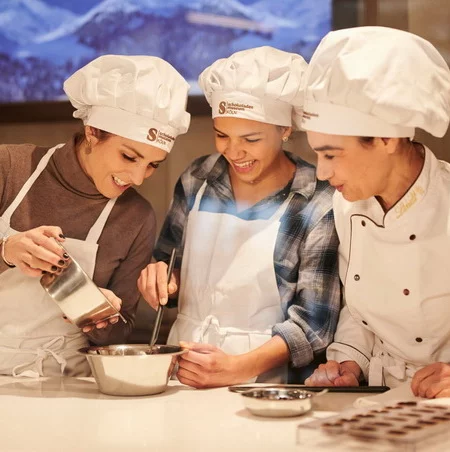
We respect your privacy. Accept cookies to view the video.
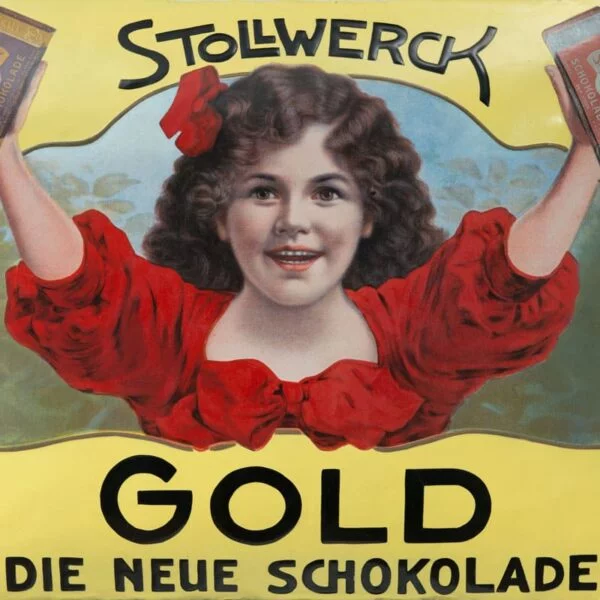

The glass chocolate factory
Our chocolate factory was completely redesigned in spring 2020 and now offers a state-of-the-art, informative and sensory museum experience. The new ingredient warehouse with its original-sized raw material containers, a huge industrial rack and oversized measuring cylinders leads you to the production line in the glass chocolate factory. A walk-through infographic provides fascinating insights into chocolate production. Strikingly visualized information and exciting media stations line the path through the entire production process: from roasting the cocoa beans to the finished bar. While the media stations illustrate the processes inside the machines, the audience constantly breathes in the seductive aroma of liquid chocolate.
Turning bitter cocoa beans into delicious chocolate is a long and complicated process that has been continuously refined over the centuries. Important inventions on the way to melt-in-the-mouth chocolate were Heinrich Stollwerck's 5-roller mill in 1873 and the conche invented by Rudolphe Lindt in 1879. You can admire both machines in the Chocolate Museum. In our glass chocolate factory, you can see exactly how the delicious chocolate mass is made from cocoa beans. The production of chocolate bars can also be followed in detail through the large viewing windows.




The glass chocolate factory
Our chocolate factory (internal link) was completely redesigned in spring 2020 and now offers a state-of-the-art, informative and sensory museum experience. The new ingredient warehouse with its original-sized raw material containers, a huge industrial rack and oversized measuring cylinders leads you to the production line in the glass chocolate factory. A walk-through infographic provides fascinating insights into chocolate production. Strikingly visualized information and exciting media stations line the path through the entire production process: from roasting the cocoa beans to the finished bar. While the media stations illustrate the processes inside the machines, the audience constantly breathes in the seductive aroma of liquid chocolate.
Turning bitter cocoa beans into delicious chocolate is a long and complicated process that has been continuously refined over the centuries. Important inventions on the way to melt-in-the-mouth chocolate were Heinrich Stollwerck's 5-roller mill in 1873 and the conche invented by Rudolphe Lindt in 1879. You can admire both machines in the Chocolate Museum. In our glass chocolate factory, you can see exactly how the delicious chocolate mass is made from cocoa beans. The production of chocolate bars can also be followed in detail through the large viewing windows.
